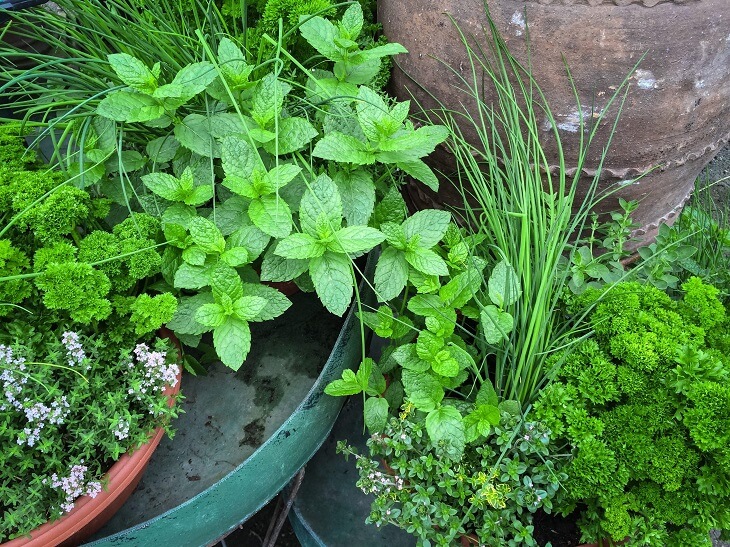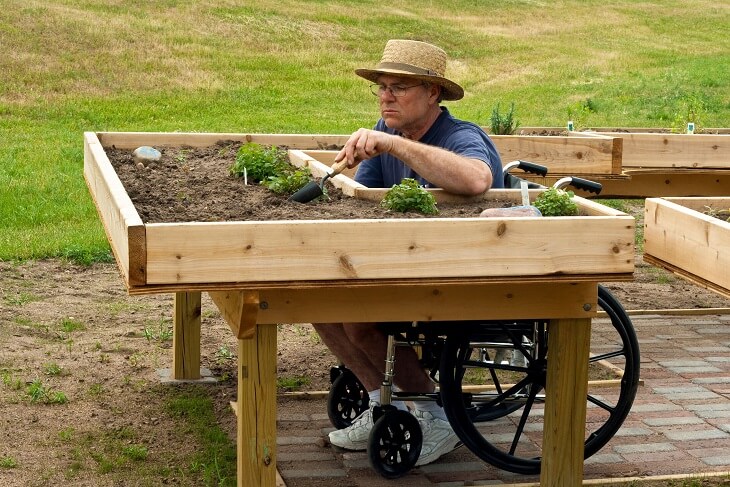Garden designer Mark Lane’s life changed course almost 20 years ago, when a car crash left him needing to use a wheelchair.
He had to come to terms with his disability, tackle severe depression and overcome chronic pain and fatigue. Mr Lane had previously had high-flying roles in publishing, but decided to change careers – and his passion for plants and the outdoors led him to study garden and landscape design, based at home.
Today, he runs his own garden design and landscape practice, has a thriving career as a TV gardening presenter and is an ambassador for various disability charities with a slant on gardening.
Read: Gardening on a budget
“As a garden designer, and as someone who uses a wheelchair all the time, I know firsthand how gardening has improved my physical health and my mental wellbeing,” says Mr Lane. “I am a strong advocate for the importance that gardening plays on our busy everyday lives and wellbeing.”
So how can more of us tune into the benefits of horticulture? Mr Lane reveals some of the wellbeing benefits of gardening, along with some top tips for getting started for those living with disabilities or illness.
Benefits for the mind and body
It’s great for mindfulness

“When in a garden or gardening, we are encouraged to live in the moment, be more mindful of ourselves and our surroundings. Our breathing slows down (unless we are digging), our shoulders drop, and in no time at all the activity of gardening has been used as a stress reliever and stress releaser,” says Mr Lane.
Helps keep you fit
“Gardening is a great way to keep fit, using muscles in our hands, arms, back, stomach and legs, without even knowing that we are doing it – better than going to the gym, in my opinion,” Mr Lane adds.
Keeps your brain healthy too

“From the first moment of thinking about what to do in the garden, whether it be passive (sitting and enjoying) or active (physically gardening), we are improving our brain health. I have noticed how my own cognitive recall has improved since gardening and doing garden design,” says Mr Lane.
Neurons in the brain are sparked, whatever you’re doing garden-wise, whether choosing seeds, border planning or actively planting. Relax your mind by creating a seating area, preferably in the shade, listening to birdsong.
You can grow your own healing herb garden

Mr Lane has his own herb garden area, aware of their natural healing powers. “Peppermint is great for helping with bloating and indigestion, dandelion is packed with vitamins and minerals and helps cleanse the liver, and rosemary and sage contain flavonoids that help prevent cancer and reduce the risk of heart attacks and strokes,” he says.
Read: Easy things to grow at home – and how to eat them
Even contact with soil could be a health-booster

“There’s a harmless bacteria, Mycobacterium vaccae, normally found in dirt, which stimulates the immune system and has also been found to boost the production of serotonin, the feel-good brain chemical,” says Mr Lane. “Low levels of serotonin are associated with depression, so physical contact with soil may [help] elevate our mood.”
Top tips for gardeners with disabilities
Use the right tools and kit for the job
Using the right tools for the job will make gardening more manageable and comfortable, Mr Lane stresses. Grabbers can be used to hold plants. Long-handled tools called ‘reacher grabbers’, with a claw at one end, are perfect for picking things up, and reaching for plants that need deadheading or pruning.
Try out long-handled tools in the shop before you buy, he suggests. They’re ideal for people who can’t bend down easily, or for those in wheelchairs. You may want to splash out on tools with interchangeable heads to save time and space.
Also, go for lightweight tools if you can – there are some good aluminium ones on the market, but be aware that some less heavy tools may not last as long as others. And consider the handles: some are more ergonomic than others, with moulded handles that are more comfortable to use.
Portable tables of differing heights are perfect for helping wheelchair-users and others with physical disabilities to plant and sow. Look out for adjustable camping tables with non-slip surfaces, which you can fold and put away afterwards. Invest in a scoop for getting compost and gravel out of bags and buy smaller bags of compost for ease of handling.
If you don’t have any raised beds which are the right height for you to plant, consider planting in pots, using tables around you to rest the pot on while you are doing it. And keep hedges at a height where you can easily trim them.
Read: Growing vegies in containers
Keep a wide path

“For wheelchair-users, the best width for a domestic path is 120cm. This allows space either side to control the chair. For more ambulant people, a width of 120cm to 140cm is ideal,” Mr Lane adds.
“It also means that for people with, for example, chronic arthritis, who may need the support of someone’s arm; this can be achieved because the path is wide enough for two people to walk side by side. And avoid gravel, which feels unstable underfoot.”
Do you enjoy gardening? What do you get out of it? Let us know in the comments section below.
– With PA
If you enjoy our content, don’t keep it to yourself. Share our free eNews with your friends and encourage them to sign up.

